1.4 ” Tooth Globidens Mosasaur fossil teeth Dinosaur Khouribga Morocco
$ 21,00
SPECIESI gdamanosaurus aegyptiacus
AGE Late Cretaceous – Maastrichtian
LOCATION wlad Abdoun Basin khouribga Morocco
FORMATION Phosphate ocp
SIZE 1.4 inch
Name: Globidens (Globe teeth).
Phonetic: Glo-bih-denz.
Named By: Gilmore - 1912.
Classification: Chordata, Reptilia, Squamata, Scleroglossa, Mosasauridae, Mosasaurinae, Globidensini.
Species: G. alabamaensis (type), G. dakotensis, G. phosphaticus, G. schurmanni, G. simplex.
Diet: Carnivore.
Size: 6 meters long.
Known locations: USA. Africa.
Time period: Campanian to Maastrichtian of the Cretaceous.
Fossil representation: Many specimens.
Although Globidens was not the only mosasaur to adapt to a diet of almost exclusively hard shelled animals, it does display perhaps the most specialised teeth. Rather than the sharp conical teeth seen in other mosasaurs such as Tylosaurus and Taniwhasaurus, Globidens had rounded teeth that had a ‘globe shaped’ upper portion of the crown that sat upon a slightly narrower base. An important aspect of the teeth being semispherical rather than conical is that they were much more resilient to impact damage such as chips and cracks. This meant that every time the jaw was moved up and down, each tooth would strike the shell of the prey animal like a ball hammer, cracking up the shell so that Globidens could get at the soft flesh within.
4 reviews for 1.4 ” Tooth Globidens Mosasaur fossil teeth Dinosaur Khouribga Morocco
Only logged in customers who have purchased this product may leave a review.
Related products
Prognathodon Anceps
2.8 ” Huge Mosasaur Prognathodon sp Tooth rare fossill Sidi chennan Morocco













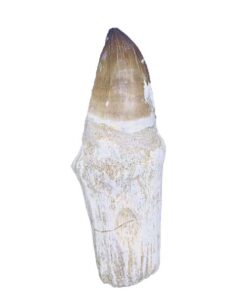
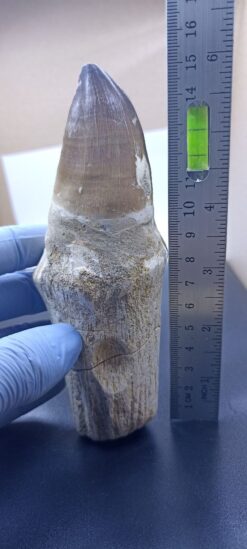


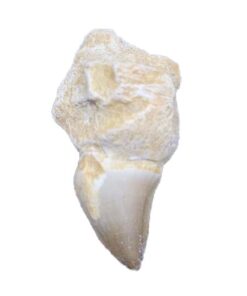
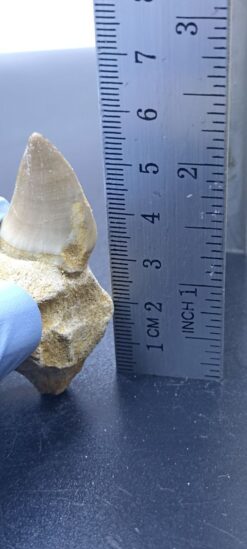


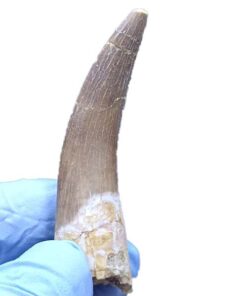
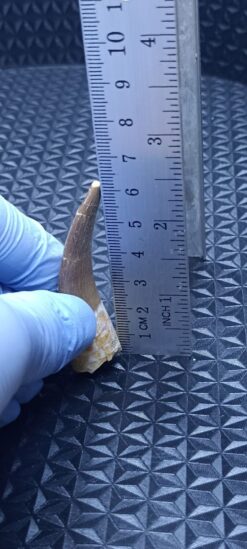
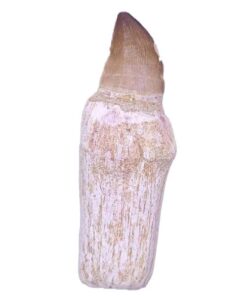
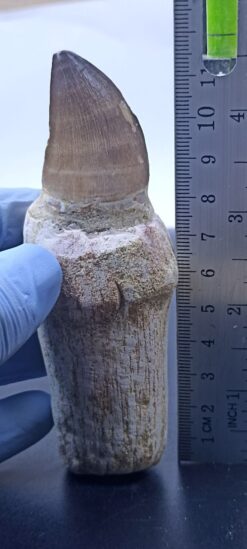
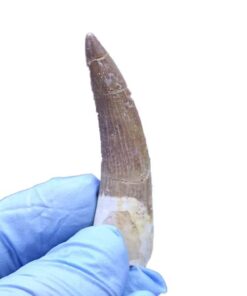
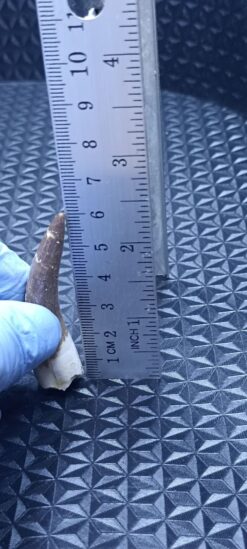


Leo (verified owner) –
Great fossil , great seller AAA+++++
Hayden (verified owner) –
I was worried about packaging because of how fragile this mineral is but it was packaged with great care!!! Looks beautiful and really adds a lovely aura to the room! Worth it 100%
Dominic (verified owner) –
Excellent product Excellent Seller.Excellent Communication
Albert (verified owner) –
This was my latest of many purchases. As always, timely shipped and beautifully packed to insure its arrival in excellent condition. This purchase was different in that we had to deal with the USPS wrongfully not delivering my item. Fortunately, *** was very understanding and worked to remedy the problem. Just more great customer service from an outstanding company. Thank you.